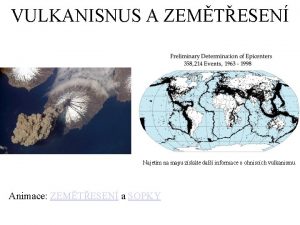www Apushreview com Period 1 1491 1607 APUSH







- Slides: 7

www. Apushreview. com Period 1: 1491 - 1607 APUSH Review: Key Concept 1. 1 Everything You Need To Know About Key Concept 1. 1 To Succeed In APUSH Updated for the 2015 revisions

The New Curriculum Key Concept 1. 1 “As native populations migrated and settled across the vast expanse of North America over time, they developed distinct and increasingly complex societies by adapting to and transforming their diverse environments. ” Big idea: How did natives adapt to their environment?

Key Concept 1. 1, I “Different native societies adapted to and transformed their environments through innovations in agriculture, resource use, and social structure. ” A) Impact of maize cultivation: Very popular in the southwest Societies developed vast irrigation systems (Pueblos in Rio Grande) How did maize transform societies? Less emphasis on hunting and gathering Increase in population Establishment of permanent villages with socially diverse societies

B) Great Plains and Great Basin Most natives lived off of hunting and gathering Lack of natural resources Large, flat area that was arid (dry) – Basin Grassland- Plains With the introduction of the horse, life on the Great Plains was drastically altered Bison hunting became much easier Natives with horses became stronger militarily Natives in the Great Basin hunted bison and sheep Like natives on the Great Plains, horses helped natives become more powerful

C) Northeast, Mississippi River Valley, and Atlantic Seaboard Many societies were a mix of hunting and gathering, and agriculture and developed permanent villages Iroquois (Present day NY and PA): Adapted to their environment: Burned forests to hunt and grow crops Villages were built around maize Iroquois were a matriarchal society: Power was based on female authority Women were instrumental in councils and decision-making Women would tend to crops and oversaw community affairs while men hunted Cahokia Indians – near present-day St. Louis (around 30, 000 people in 1200) Built giant mounds Largest settled community until NY and Philadelphia in 1800

D) Northwest And Present-Day California Roughly 300, 000 natives lived in California prior to the arrival of Europeans Most of these societies were based on hunting, gathering, and foraging Gather nuts, fish, and hunted Societies tended to be ruled by wealthy families Chinooks Advocated warrior traditions Used advanced fighting techniques Lived in longhouses which could house many families

Test Tips Multiple-Choice and Short Answer Questions: Map of different areas of North America: How did natives adapt to their environment? Essay Questions: Not likely since it is from period 1













